-
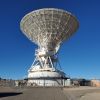 +32 +5
+32 +52024 Total Eclipse
On April 8, 2024, a total solar eclipse will cross North America, passing over Mexico, the United States, and Canada. A total solar eclipse happens when the Moon passes between the Sun and Earth, completely blocking the face of the Sun. The sky will darken as if it were dawn or dusk. Safety is the […]
-
 +16 +4
+16 +4Uncovering Yerkes Observatory’s Forgotten Female Astronomers
It all started with a photo of Einstein.
-
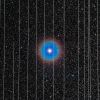 +28 +5
+28 +5Starlink satellites are 'leaking' signals that interfere with our most sensitive radio telescopes
Starlink satellites emit bright, unintended and unexpected signals that interfere with radio telescopes.
-
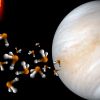 +11 +1
+11 +1Life on Venus? Intriguing molecule phosphine spotted in planet's clouds again
There's a new chapter in the Venus phosphine debate.
-
 +4 +1
+4 +1James Webb Space Telescope finds possible evidence of dark stars
A trio of astrophysicists, two from Colgate University and the third from the University of Texas, has found evidence of dark stars courtesy of data from the James Webb Space Telescope. In their study, reported in Proceedings of the National Academy of Sciences, Cosmin Ilie, Jillian Paulin and Katherine Freese, analyzed three galaxies spotted by the JWST and how they might relate to dark stars.
-
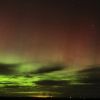 +25 +3
+25 +3Solar storm on Thursday expected to make Northern Lights visible in 17 states
A solar storm forecast for Thursday is expected to give skygazers in 17 American states a chance to glimpse the Northern Lights, the colorful sky show that happens when solar wind hits the atmosphere. Northern Lights, also known as aurora borealis, are most often seen in Alaska, Canada and Scandinavia, but an 11-year solar cycle that's expected to peak in 2024 is making the lights visible in places farther to the south. Three months ago, the light displays were visible in Arizona, marking the third severe geomagnetic storm since the current solar cycle began in 2019.
-
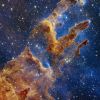 +33 +3
+33 +3Seven Amazing Accomplishments the James Webb Telescope Achieved in Its First Year
The James Webb Space Telescope, the largest and most sophisticated space observatory ever built, has been sending back images and data for almost a full year now—and in that time it has delivered a treasure trove of information about everything from stars and planetary systems in our own galactic neighborhood to distant galaxies that formed when the universe was a tiny fraction of its current age.
-
 +20 +4
+20 +4Astronomers observe time dilation in early universe
Astronomers have watched the distant universe running in slow motion, marking the first time that the weird effect predicted by Einstein more than a century ago has been observed in the early cosmos.
-
 +12 +2
+12 +2Just How Super Is The Coming Supermoon?
July's full moon will be thousands of miles closer to us than usual. Learn how to measure it with your hand.
-
 +23 +5
+23 +5Missing Stars Puzzle Astronomers: Could Intelligent Life Be the Cause?
Over a period of 70 years, thousands of stars have vanished from the sky; Which prompted a team of astronomers to shed light on this phenomenon .. and perhaps a (very weak) hope of uncovering traces of intelligent civilizations outside the planet.
-
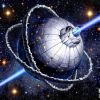 +4 +1
+4 +1Repeated signals from the center of the Milky Way could be aliens saying hello, new study claims
Could intelligent aliens be lurking at the heart of the Milky Way? A new search for extraterrestrial life aims to find out by listening for radio pulses from the center of our galaxy. Narrow-frequency pulses are naturally emitted by stars called pulsars, but they're also used deliberately by humans in technology such as radar.
-
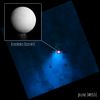 +16 +6
+16 +6Webb maps surprisingly large plume jetting from Saturn’s moon Enceladus
A water vapour plume from Saturn’s moon Enceladus spanning more than 9600 kilometres — long enough to stretch across the Eurasian continent from Ireland to Japan — has been detected by researchers using the NASA/ESA/CSA James Webb Space Telescope. Not only is this the first time such water ejection has been seen over such an expansive distance, but Webb is also giving scientists a direct look, for the first time, at how this emission feeds the water supply for the entire system of Saturn and its rings.
-
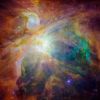 +18 +4
+18 +4Our Sun Was Born in a Stellar Family Far, Far from Here
Is the sun an only child? Or was it born into a (very, very) big family? The answer tells us more than just how awkward holiday family reunions can be (if you think yours are bad, imagine how much worse it would be with a few thousand sibling rivals). After all, the sun’s origin story is, ultimately, our own. We’ve seen huge leaps in our understanding of how stars form, but, ironically, we still have some pretty fundamental questions left about our nearest, dearest one.=
-
 +26 +4
+26 +4Galaxies spotted by Webb telescope rewrite understanding of early universe
Observations by NASA's James Webb Space Telescope are upending the understanding of the early universe, indicating the presence of large and mature but remarkably compact galaxies teeming with stars far sooner than scientists had considered possible.
-
 +4 +1
+4 +1Supermassive black hole at heart of ancient galaxy ‘far larger than expected’
A supermassive black hole discovered at the heart of an ancient galaxy is five times larger than expected for the number of stars it contains, astronomers say. Researchers spotted the immense black hole in a galaxy known as GS-9209 that lies 25bn light-years from Earth, making it one of the most distant to have been observed and recorded.
-
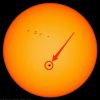 +11 +1
+11 +1A sunspot four times the size of Earth is visible right now — here's how to see it without a telescope
A huge sunspot is darkening the sun's face and you can easily spot it through solar glasses. Here's where the sunspot is and how to view it safely.
-
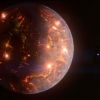 +25 +3
+25 +3This Volcano-Covered Planet May Be Habitable to Alien Life
At first glance, LP 791-18 d seems like a lively place. If new findings from NASA researchers hold up, the Earth-sized exoplanet orbiting a star 90 light-years away from us is teeming with active volcanoes all over its surface. Interesting, sure—but clearly no place for life to thrive, right?
-
 +20 +3
+20 +3Betelguese’s Brightening Raises Hopes for a Supernova Spectacle
Even if you don’t know it by name, the red supergiant star Betelgeuse is one of the most familiar sights in the heavens above—a gleaming ruddy dot at the shoulder of the constellation Orion. Although already quite difficult to overlook, Betelgeuse has become even more eye-catching across the past few years because of major changes in its appearance—unexpected fluctuations in its brightness that remain poorly understood. In recent weeks, the star has at times shone more than 50 percent brighter than normal, drawing renewed attention from amateur sky watchers and professional astronomers alike.
-
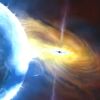 +28 +4
+28 +4Astronomers spot the biggest cosmic explosion ever seen, and it's 100 times the size of our solar system
The blast, which is 2 trillion times brighter than the sun, may have been caused by a supermassive black hole sending shock waves through a cloud of cosmic gas.
-
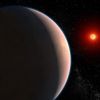 +24 +6
+24 +6James Webb telescope detects water vapor in nearby star system, but its origin remains a mystery
The James Webb Space Telescope may have just given the world another monumental scientific breakthrough. On Monday, NASA announced that astronomers detected water vapor around a distant rocky planet with the help of JWST.
Submit a link
Start a discussion




















